Chilling new satellite images expose China’s rapidly expanding nuclear weapons arsenal
Fresh images reveal Beijing is rapidly escalating its nuclear capabilities, with chilling new mega structures in a desert putting the world on notice.
Chilling new satellite photos have exposed China’s plans to rapidly expand its nuclear weapons capability, showing the construction of more than 100 underground missile silos.
The mammoth site in a remote desert in the Xinjiang province in the country’s west was captured by aerial surveillance, with images released overnight by the Federation of American Scientists (FAS).
In an accompanying report, experts said analysis indicated Beijing was building 110 silos there to house and launch intercontinental ballistic missiles (ICBM).
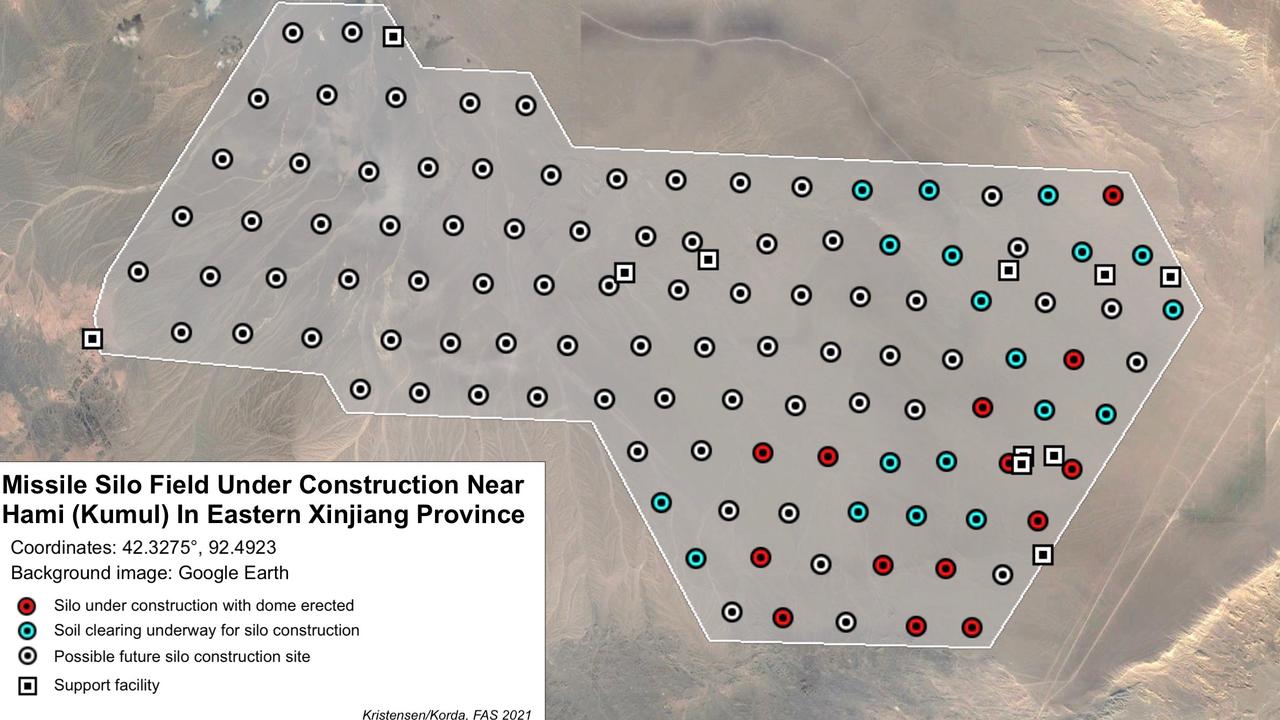
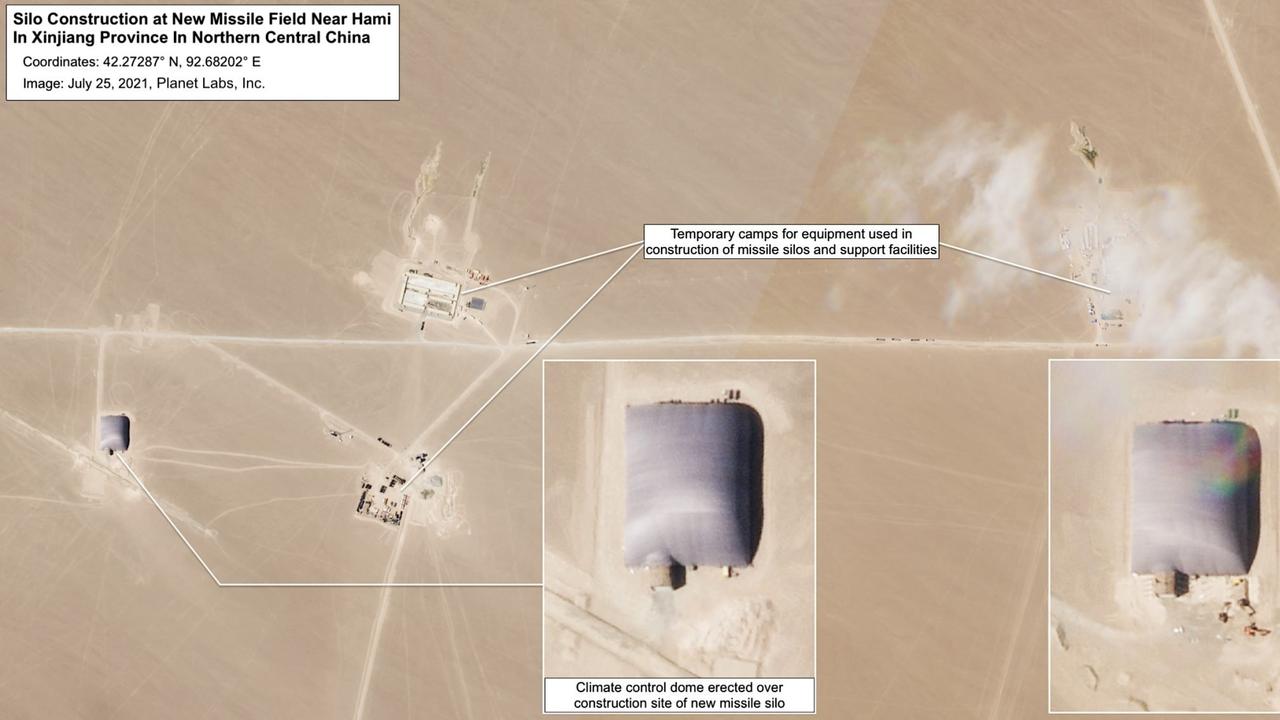
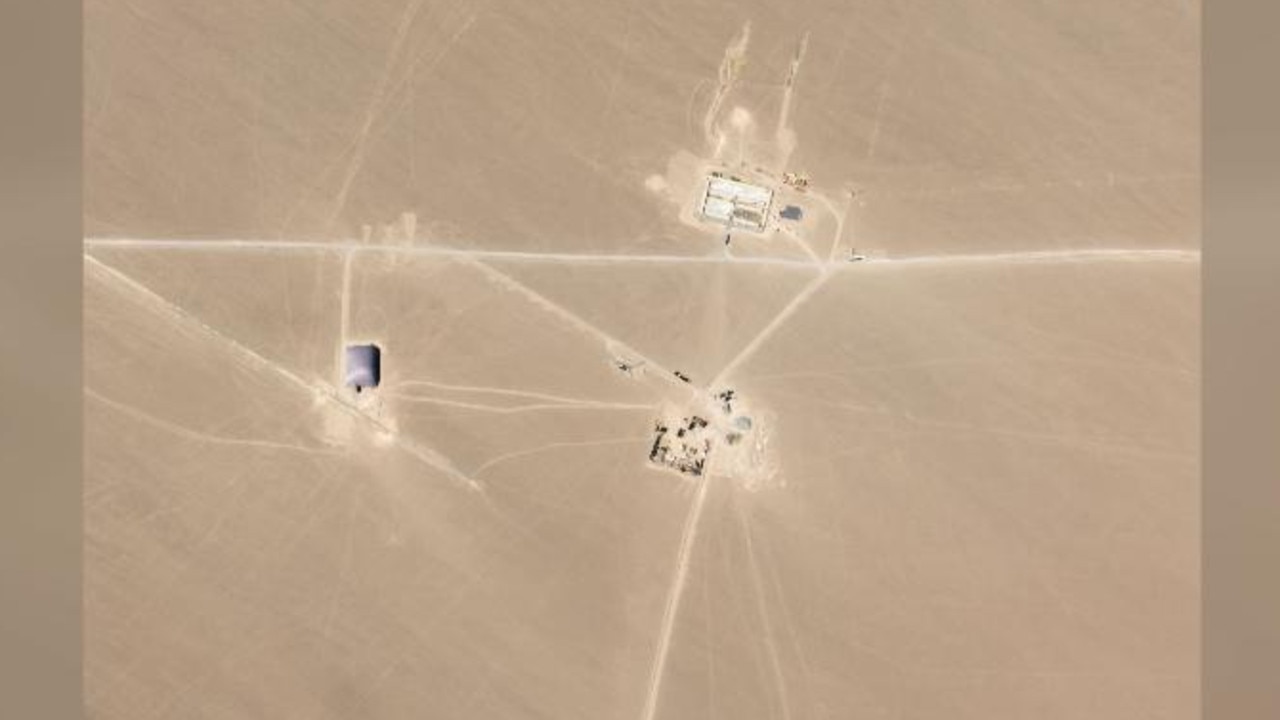
Adam Ni, director of the China Policy Centre in Canberra, told CNN the startling images were “pretty convincing evidence of China‘s intent to significantly expand its nuclear arsenal – in a faster manner than a lot of analysts have so far predicted”.
It’s the second new field construction to be identified in the region – the first consisting of 120 silos being revealed two months ago.
Silos in both fields are about 3km apart in a grid formation, indicating the ability to move missiles between silos. That strategy, called a ‘shell game’, makes it hard for enemies to target and destroy facilities in battle.
Combined, the two sites represent “the most significant expansion of the Chinese nuclear arsenal ever”, Mr Ni said.
Defence officials in the United States are growing increasingly concerned about the rapid escalation of nuclear weapon investment, which comes at a time of deteriorating relations between the two nations.
RELATED: Former Major General says Australia-US have only slim chance against China
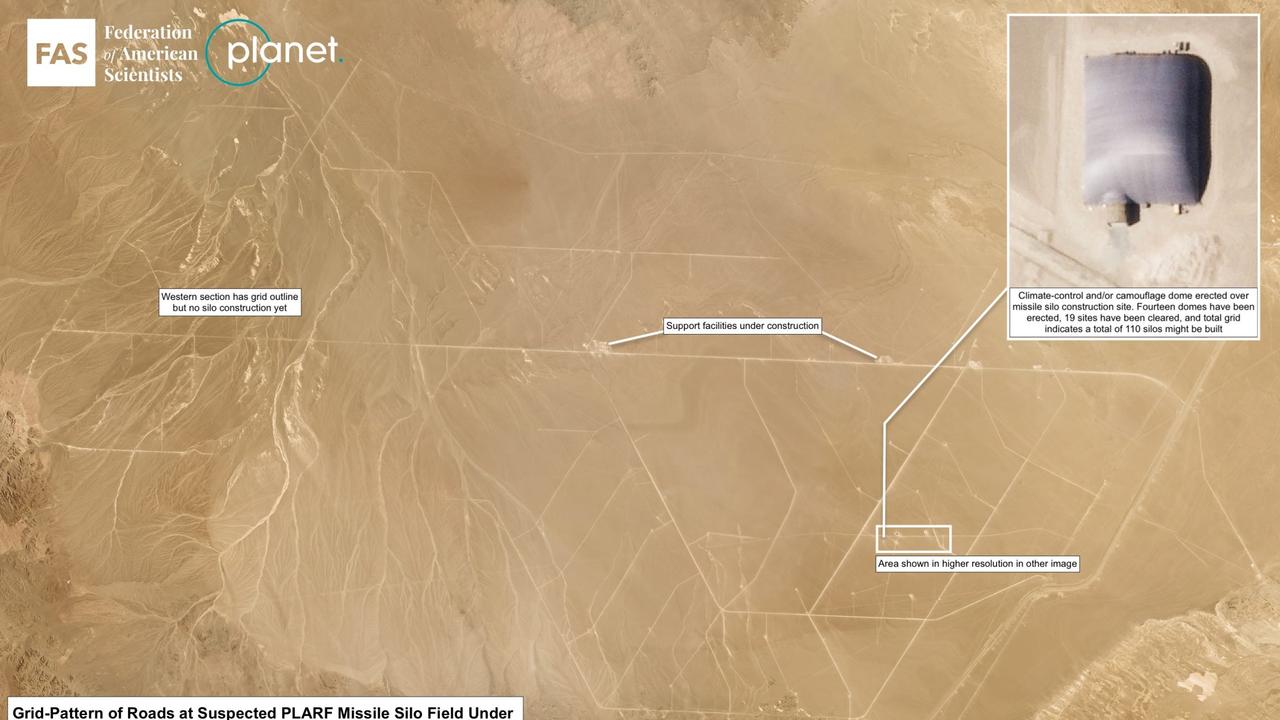
China’s Foreign Ministry hasn’t commented on the images, but state-controlled media previously described the first missile silo site as being nothing more than a wind farm.
But analysts from the James Martin Centre for Non-Proliferation Studies concluded it was a vast missile site covering hundreds of square kilometres.
“It‘s really a startling pace of construction,” Jeffrey Lewis from the institute, also a Chinese nuclear weapons expert, told CNN at the time.
China’s expanding nuclear arsenal
For decades, Beijing maintained a small number of approximately 20 silos for its ICBMs, the DF-5, which is a liquid-powered weapon.
The FAS said it now appears to be aiming for 10 times as many silos as that, potentially to house its newest ICBM, the DF-41.
And that expansion means China is quickly catching up to the United States.
“The Chinese missile silo program constitutes the most extensive silo construction since the US and Soviet missile silo construction during the Cold War,” its report said.
“The number of new Chinese silos under construction exceeds the number of silo-based ICBMs operated by Russia and constitutes more than half of the size of the entire US ICBM force.”
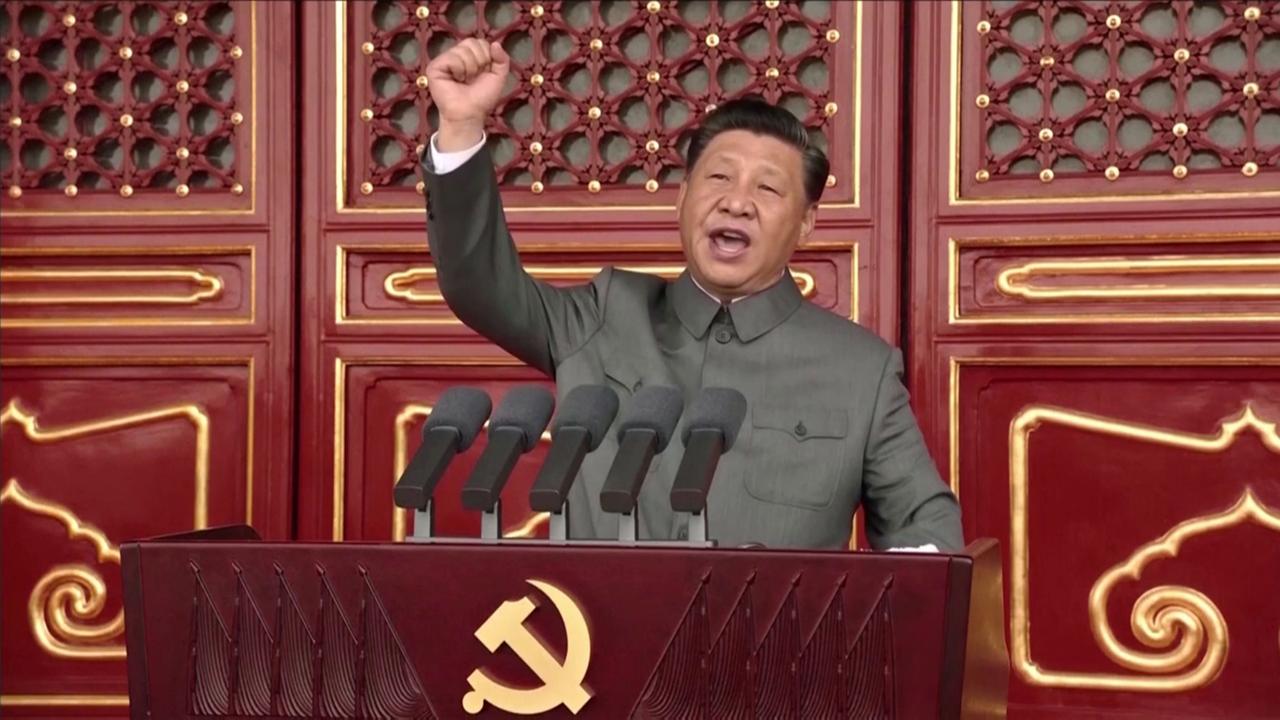
Beijing is part of a decades-old pact by peaceful nations to keep nuclear weapon stashes at a minimum level – just enough to deter an enemy from attacking.
That kept China’s stockpile at a relatively low level, estimated to have been about 145 in 2006.
“The build-up is anything but ‘minimum’ and appears to be part of a race for more nuclear arms to better compete with China‘s adversaries,” the FAS report said.
China currently has an estimated 250 nuclear warheads, according to the Stockholm International Peace Research Institute. America has about 3800.
Defence officials in the US are bracing for China’s nuclear weapons stock to double over the next decade – at least.
“Despite (China’s) obfuscation, this rapid build-up has become more difficult to hide and highlights how China is deviating from decades of nuclear strategy based around minimum deterrence,” the US State Department said in a statement.
“These advances highlight why it is in everyone‘s interest that nuclear powers talk to one another directly about reducing nuclear dangers and avoiding miscalculation.”
RELATED: China’s emergency naval exercise over Taiwan revealed
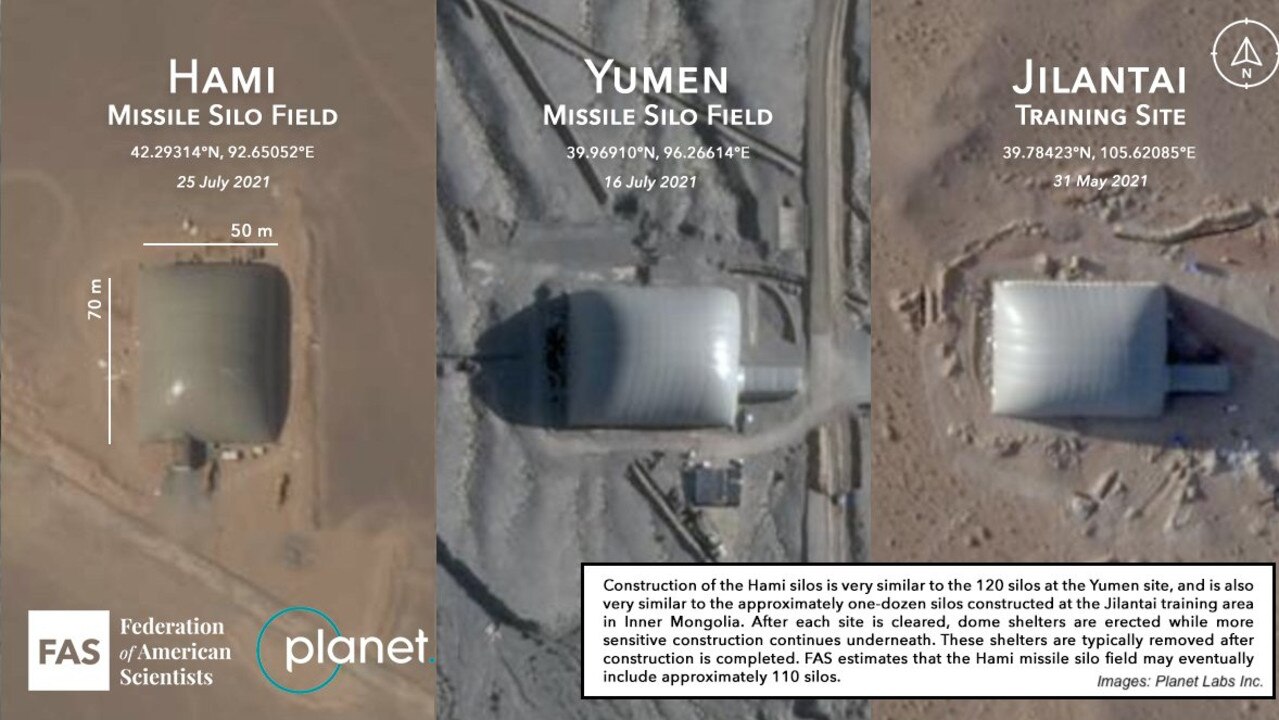
Australia firmly in the firing line
China’s rhetoric has amped up several notches in recent months, with officials directing strongly worded threats at the West over their pledges to defend Taiwan from any attempted takeover.
In May, the Chinese Community Party mouthpiece The Global Times published an extraordinary editorial warning Australia of “retaliatory punishment” with missile strikes “on the military facilities and relevant key facilities on Australian soil”.
That particular threat was in response to speculation that Australia could join with the United States and other allies to protect Taiwan from invasion.
Beijing is investing significantly in its military capability, Professor Paul Dibb from Australian National University, a former deputy secretary of the Department of Defence and former director of the Defence Intelligence Organisation wrote this week for the Australian Strategic Policy Institute.
RELATED: China escalates plans to crush Australian iron ore industry
Estimates indicate China is planning to double its strategic nuclear forces and is building more than 100 new silos for intercontinental ballistic missiles in the country’s northwest, Professor Dibb said.
“In addition to its strategic nuclear warheads, Beijing has about 2000 theatre nuclear missiles capable of targeting much of the Indo-Pacific,” he wrote.
“The majority of them are nuclear-armed, but some of the optionally conventionally armed variants – such as the 4000-kilometre range DF-26 – can reach the north of Australia.
“The main point here for Australia is that unless we acquire missiles with ranges in excess of 4000km, we won’t be able to retaliate against any attack on us. But, in any case, for a country of our size to consider attacking the territory of a large power like China isn’t a credible option.”
Preparing for the kind of threat outlined by The Global Times depends on the US making it clear that it would defend Australia against any attack, he said.
A powder keg situation
Such commentary about Australia’s need to be defended from China, such as Professor Dibb’s, might seem overly alarmist.
But worsening tensions over Taiwan are a cause for concern, as evidenced by Japan’s latest defence white paper, released earlier this month.
For the first time, the country acknowledged its determination that Taiwan remain peaceful and secure, and that China’s “intensified military activities” around the disputed territory warrants “close attention … with a sense of crisis”.
It came hot on the heels of an extraordinary remark by Japan’s Deputy Prime Minister Taro Aso, who said the country’s military “would have to defend Taiwan” alongside the US if China invaded. Mr Aso later withdrew the statement.
Beijing was officially furious and unofficially threatening, with a military commentary social media channel uploading a video of a simulated nuclear war with Japan.
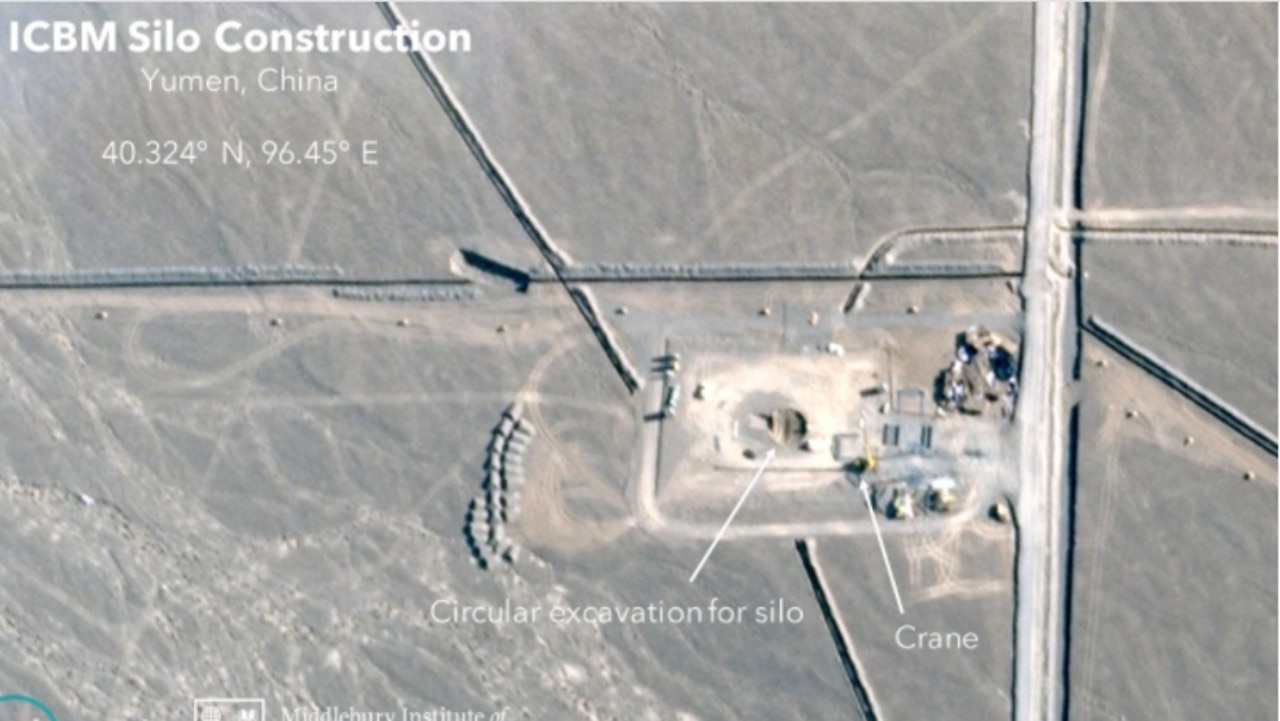
Thomas Wilkins, a senior lecturer at the University of Sydney, wrote in an article for The Conversation that Tokyo’s significant foreign policy shift could have implications for security in the Asia-Pacific region.
“Seeing Taiwan’s plight as part of a larger pattern of Chinese assertiveness is surely a motivator behind Tokyo’s new declaration of interest in the Taiwan issue,” Mr Wilkins wrote.
“Nevertheless, it is important to underline that Japan is in no sense legally obligated to provide military assistance in a potential conflict over Taiwan. There are still strict legislative restraints on the use of force firmly in place.
“Rather, the defence white paper should be viewed as a strong indication that Japan believes it cannot afford to idly stand by as the Asia-Pacific security environment continues to deteriorate.
“It is therefore assuming greater responsibility to maintain a rules-based order that it believes will provide stability and prosperity for this dynamic region.”




